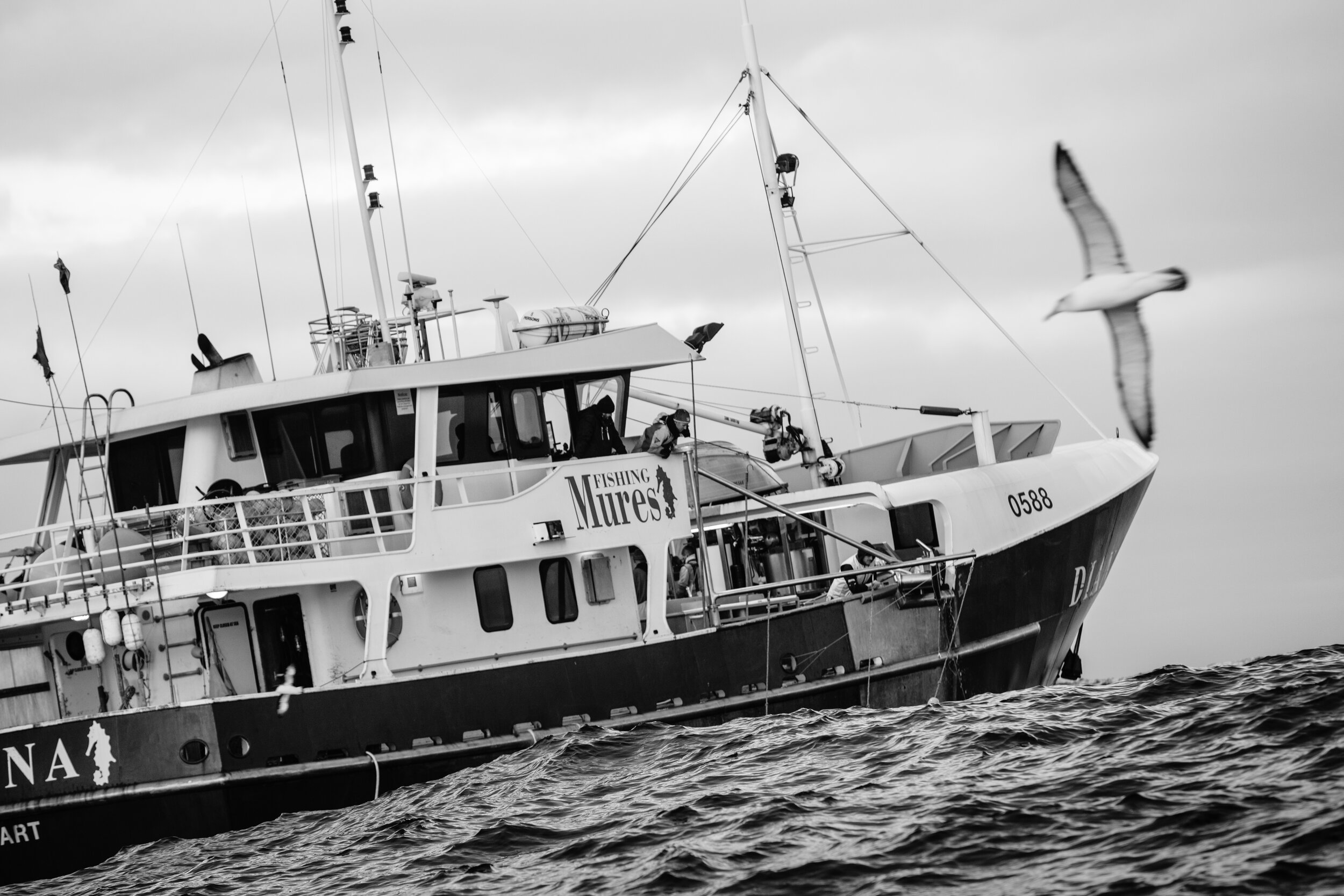
Fishing Practices & Industry Innovation
Mures has made numerous investments in technology and choices of fishing methodology over the years that demonstrates our ongoing commitment to environmental sustainability:
Longline Fishing – Demersal longlining involves setting lines of hooks and suspending them from weights horizontal to the ocean floor. This method ensures minimal impact on the physical environment, specifically the sea-bed.
Species Specific Fishing – We set our hooks at a specific benthos type and depth to target only the species being sought, primarily Blue Eye Trevalla and Pink Ling. Whenever possible we use locally caught squid to bait the hooks. This is a direct natural food source for these species.
Industry Regulation – Our sustainability methods are not just operational guidelines, but are actual conditions of our Mures Fishing Permits. We have permanent cameras set up to monitor all of the fishing operations including catch rates and wildlife interactions (along with seabird welfare). We also carry AFMA appointed observers as required.
Seabird Welfare – To safeguard sea birds from our fishing line we; use heavy weights to ensure the baited lines sink quickly, set lines at night whenever possible, use Tori lines (streamers) to deter the presence of birds and dispose of offal in a bulk discharge beneath the surface to avoid attracting the birds to any fishing activity. In conjunction with the Australian Fisheries Management Authority (AFMA), we trialed the use of laser technology to further deter seabird presence.
Current Director Will Mure is also a long-standing member of one of AFMA’s management advisory committees. This role involves discussions regarding setting quota and other fisheries management issues, which in turn informs current fishing practices. Over the years he has contributed greatly to the AFMA, assisting in the development of practices for more efficient, sustainable management of Australian fish resources.
Mures Fishing is involved in a program where we harvest the otoliths (ear bones) and other biological material from our line-caught Blue Eye Trevalla. The bones are collected and then sectioned to be read like tree rings to give an estimate of the age of the fish. This valuable information allows the industry to better track the status of fish stocks.

